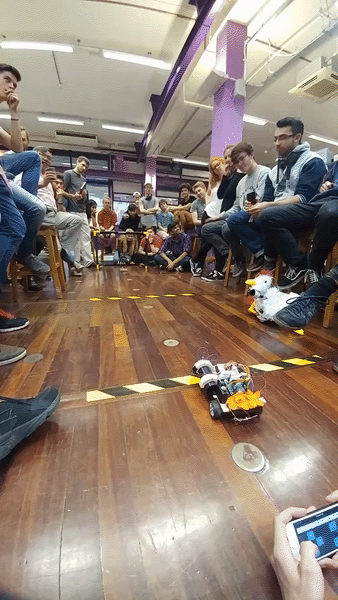Penalty Shootout and "Moon rover" Robots:
- Alfie Thompson
- Jan 9, 2018
- 2 min read
Group project

Brief (in brief)
Build and code two different robots capable self driving and Bluetooth control. The first robot should be able to compete in a penalty shoot out at a goal placed at 2m distance from the robot and blocked with a goal keeper. The second should be able to traverse around a moon surface simulation and detect different objects as quickly as possible.


Method
The first part of the project focused on experimenting with the electronics. First we worked to perform simple motor control. Using a TB6612 dual motor driver chip, we could power the two dc motors with hall effect sensors. We could then start connecting the Bluetooth and the IR sensors. These were our two methods of control that each robot needed.
For the penalty shootout robot, there was an additional servo to release the pre-loaded canon. The canon itself worked well due to the simple firing mechanism and perfect fit of the pvc tubing.
The second moon rover robot features a small suite of sensors. In addition to the hall effect sensor attached to the motors and the IR sensors, there is an ultrasonic sensor connected to an Op Amp and there is a secondary hall effect sensor. The challenge required us to detect whether the "rock" was magnetic, outputted an ultrasonic signal, or were simply inert as fast as we can.


Results
The results of this project were tested on a competition day. This entailed a penalty shootout knockout competition against all of the other teams (13 teams in total). The moon robot competition was conducted as a leader board. It was a combination between speed and accuracy.
During the moon competition, we found that our robot would detect the rocks easily. It was, however, difficult to see what was detected. We found that we had to sit at the rock for around 6 or 7 seconds before we could move on. We placed in the upper half of the competition, but it did make it more difficult to operate.
In the penalty shootout, our design worked fantastically. The control scheme helped a huge amount. We coded the Bluetooth control to allow the robot to turn continuously until the stop button is pressed. This allowed for extremely precise control. Our group won the shoot out primarily because of this control system.
Photo Credits: Joseph Shepherd











Kommentare